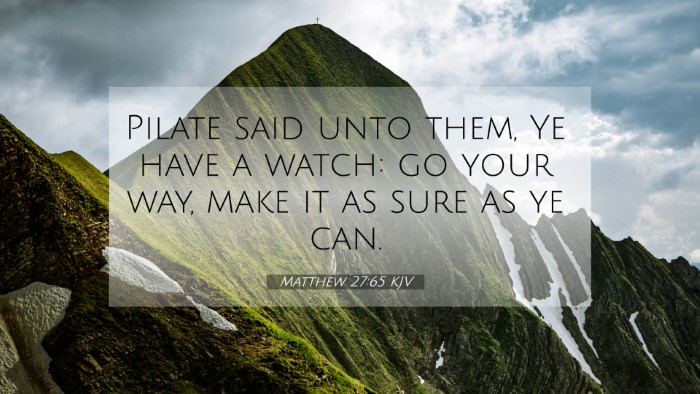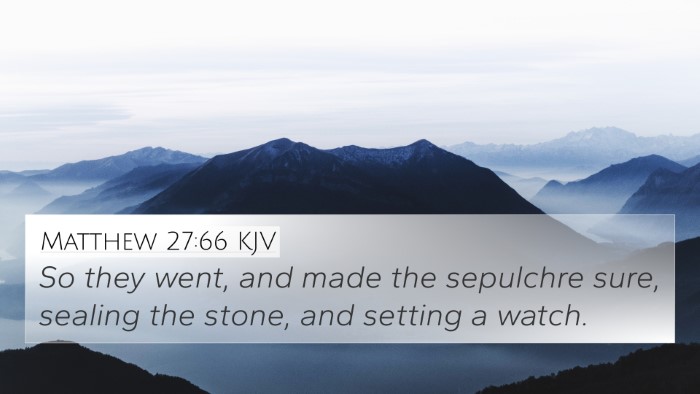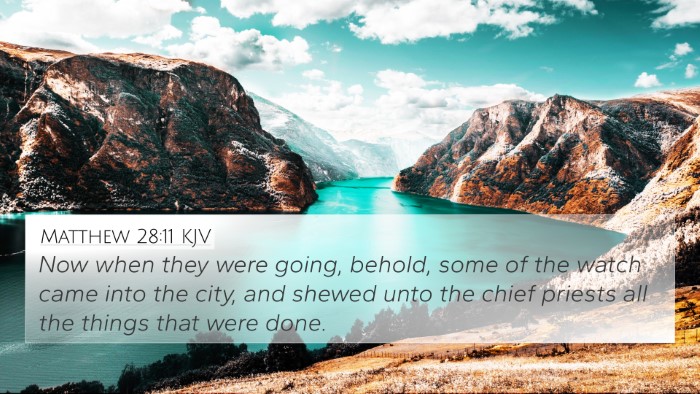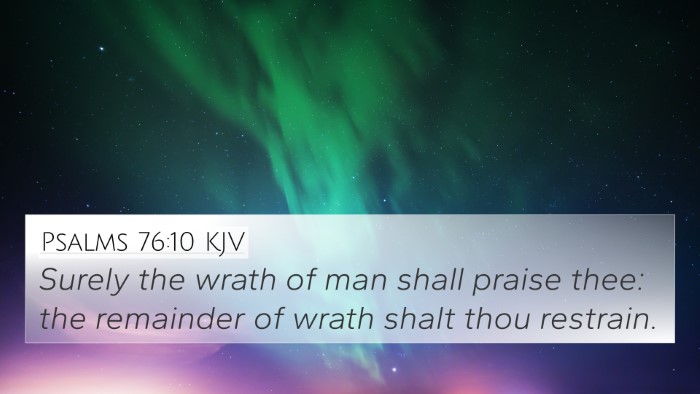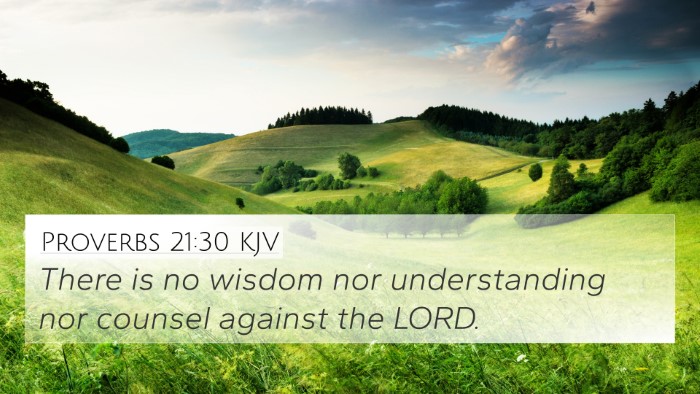Understanding Matthew 27:65
Verse Text: "Pilate said to them, 'You have a guard; go your way, make it as secure as you know how.'
Contextual Overview
This verse falls within the narrative of the crucifixion of Jesus and the events leading up to the resurrection. It reflects the tensions surrounding the guards and the tomb, as the chief priests and Pharisees express their concerns over Jesus’ prophecy about rising from the dead.
Summary of Insights
The passage indicates Pilate's concern regarding the potential for the body of Christ to be stolen, a serious matter given the Jewish leadership's claims about Jesus’ resurrection. This verse highlights the dynamics between secular authority and religious leaders, and it serves as a backdrop to the resurrection narrative.
Commentary Insights
- Matthew Henry: Henry notes that Pilate’s response reveals his indifference to the spiritual implications of Jesus’ death and resurrection. His order to secure the tomb showcases the extent to which the Jewish leaders would go to ensure their control over the situation.
- Albert Barnes: Barnes emphasizes that Pilate, who was cynical about the religious concerns, ironically facilitated the fulfillment of the resurrection prophecy by granting the request for a guard. His actions inadvertently set the stage for a miraculous event, which would validate Jesus’ claims.
- Adam Clarke: Clarke suggests that the “guard” refers to a Roman cohort, illustrating the authority and militaristic power that the Romans exerted over the Jews at that time. This also corresponds to the intense fear of the Jewish leaders regarding the possibility of an empty tomb.
Key Cross-References
Matthew 27:65 connects with several other scripture passages that deepen our understanding:
- Matthew 28:4: The account of the guards witnessing the resurrection of Jesus.
- John 10:18: Jesus speaks about laying down His life and taking it up again, which ties into the theme of resurrection.
- Acts 2:24: Peter proclaims that God raised Jesus from the dead, affirming the resurrection aspect and overcoming death.
- Matthew 27:62-64: The prior discussion among the chief priests about securing the tomb to avoid deceit.
- Revelation 1:18: Jesus states, "I am the Living One; I was dead, and now look, I am alive forever and ever!" This echoes the resurrection theme.
- Isaiah 53:10: Prophecy concerning the suffering servant, hinting at the ultimate purpose of Jesus’ death.
- Psalm 16:10: "You will not abandon my soul to Sheol," foreshadowing the resurrection of Jesus and His victory over death.
Thematic Connections
This verse invites thematic explorations around the nature of authority, fear of loss of control, and the deep mystery of resurrection:
- Authority vs. Faith: Pilate’s secular authority stands in contrast to the profound truth of Jesus’ spiritual mission.
- Skepticism and Faith: While Pilate shows skepticism, the act of securing the tomb ironically highlights the truth of Jesus’ resurrection.
- Fulfillment of Prophecy: The concerns of the Jewish leaders reflect their awareness of prophetic scriptures tied to the Messiah.
Reflective Questions
As you study Matthew 27:65, consider these reflective questions:
- What does Pilate's indifference reveal about the clash between secular authority and divine purpose?
- Why is the request for guards significant in the context of Jesus' resurrection?
- How can we relate the themes observed in this passage to our own struggles with faith and authority?
Conclusion
Matthew 27:65 serves as a pivotal moment within the Passion narrative, highlighting the tension between the secular and the sacred, and ultimately foreshadowing the miraculous nature of resurrection. By engaging in comparative verse analysis, readers can appreciate the intricate connections between this verse and other scripture passages, enriching their understanding of biblical themes.
Resources for Further Study
For those interested in deepening their understanding and performing cross-reference studies, consider exploring these tools:
- Bible Concordance: A useful tool for locating verses and their meanings.
- Bible Cross-Reference Guide: To enhance your study with thematic connections between scriptures.
- Cross-Reference Bible Study: Techniques and strategies for connecting verses across different contexts.


